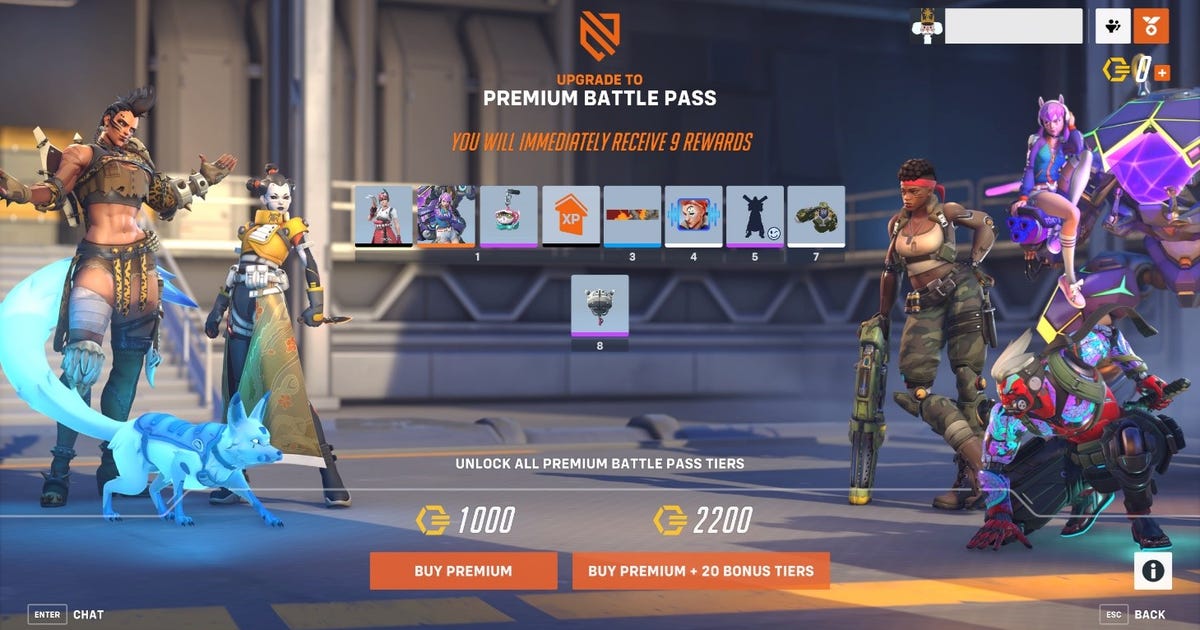
We’re only a few weeks away from the launch of Overwatch 2, and Blizzard on Thursday released new details about the battle pass and monetization system for the hero-based shooter. The new game will introduce a massive change compared to the original: New heroes, like the upcoming support hero Kiriko, will be unlockable through the free battle pass, but not until level 55. In the original Overwatch game, players got free, immediate access to all new heroes.
The change comes as part of Overwatch 2’s move to a live-service, free-to-play model. It’s also one of the biggest differences between Overwatch and Overwatch 2, right alongside changing team size from five players to six. Returning Overwatch players will get immediate access to all three new heroes, Sojourn, Junker Queen and Kiriko, by claiming the free Founder’s Pack, but future heroes will have to be unlocked.
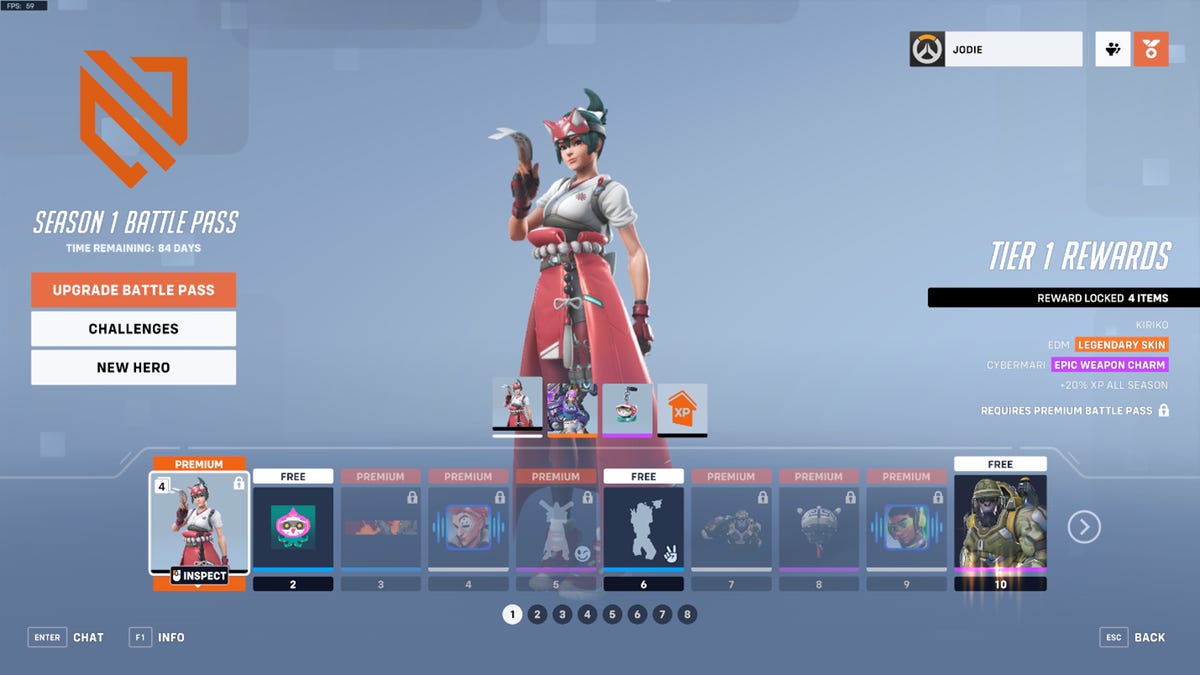
Blizzard
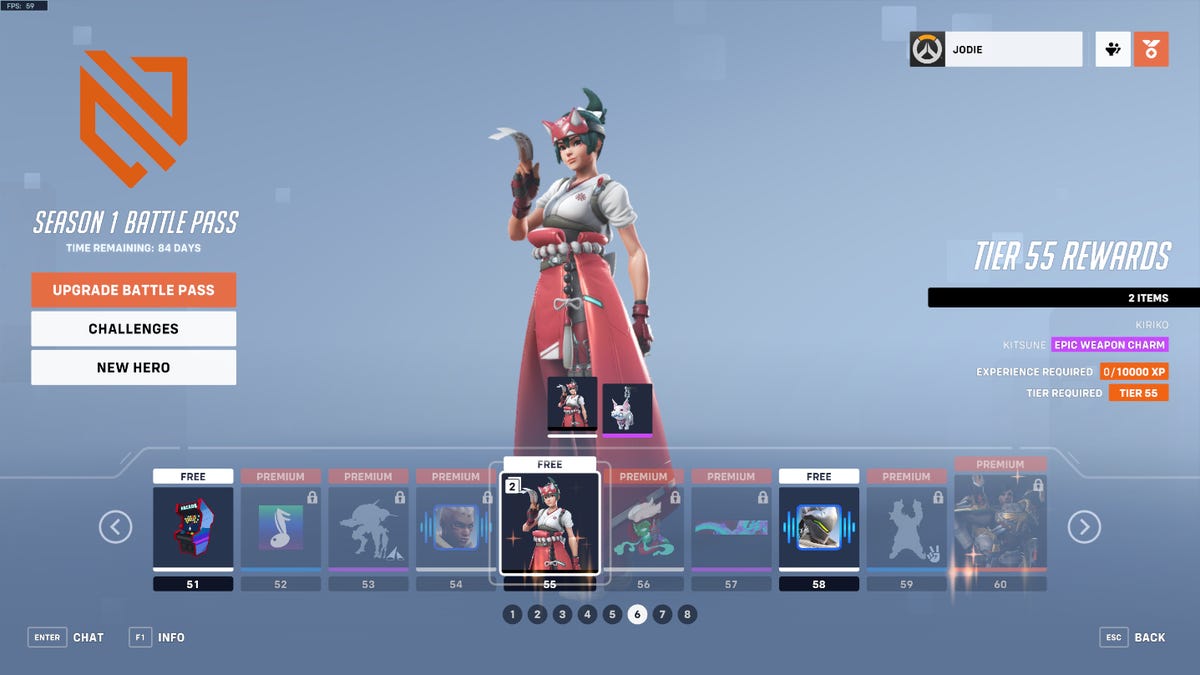
Overwatch 2 battle passes will have rewards on free and paid tracks. Players who purchase premium tracks will get new heroes immediately, while paid users will have to reach tier 55 to unlock the hero.
Blizzard
Like many live-service games, Overwatch 2 is offering two tracks in its battle pass: a free track with a smaller number of unlockable items, and a paid track that offers more (and arguably more sought-after) cosmetics than the free track. Buying the premium battle pass also grants immediate access to any new heroes that are introduced that season. Blizzard plans to release new heroes every other season (and back-to-back releases in the first two), with new maps being added to the game in seasons without new heroes.
New heroes will be locked out of competitive modes for several weeks, according to Aaron Keller, game director of Overwatch 2. He said the intent behind that window is two-fold: Give people time to unlock new heroes, and give the developers a chance to balance those heroes before they enter competitive settings. It’s unclear exactly how many weeks new heroes will be unavailable in competitive or how much time it will take to reach level 55 of the battle pass. But given that 80 levels are intended to last players a nine-week season, it looks to be a substantial time investment for players to unlock new heroes without paying.
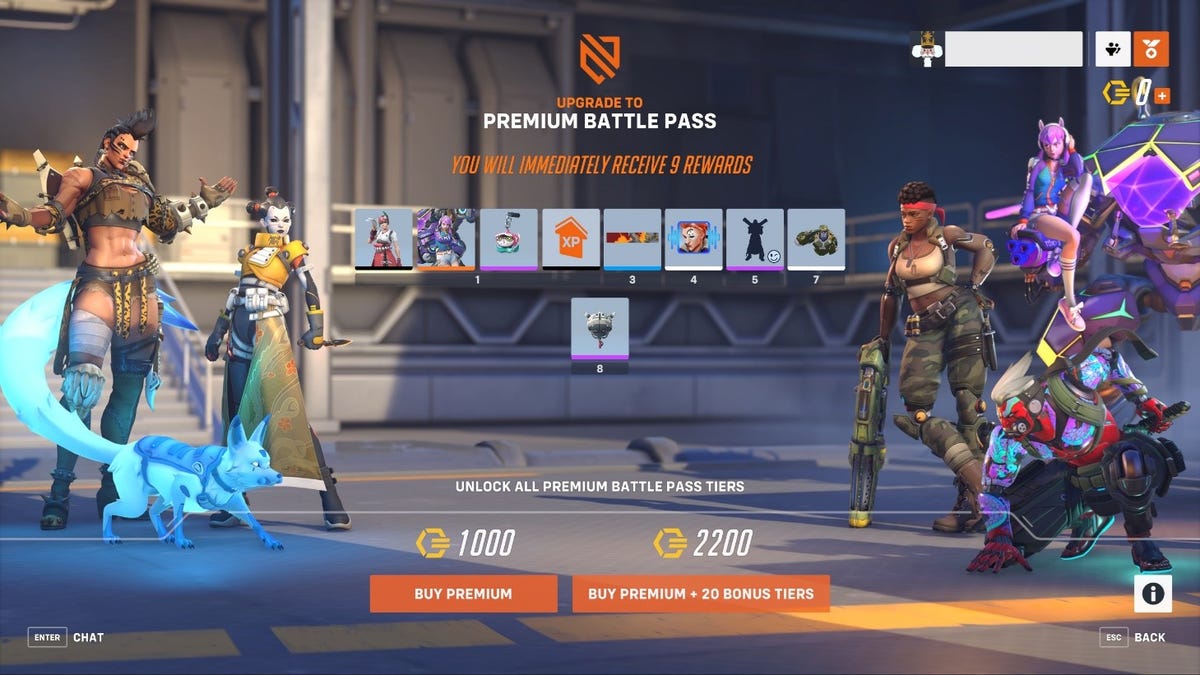
The premium battle pass will come with exclusive rewards.
Blizzard
The cost of new heroes: Time or money
With seasons lasting nine weeks, and heroes being released every other season after the first two, players will see roughly six battle passes each year. Using the season 1 price of $10 per battle pass, that translates to $60 per year for every battle pass, or $30 per year if you only buy battle passes containing new heroes. That’s roughly in line with shooters like Valorant, which also allow you to unlock new heroes for free by playing the game or unlock immediately by paying $10 worth of in-game currency.
Players can earn that currency for free through daily and weekly challenges, but Keller and Overwatch 2 Commercial Lead Jon Spector said it will take roughly two seasons of consistent playing to earn enough to unlock a premium battle pass — theoretically allowing players to earn all new heroes with immediate unlocks for free, but only with consistent play time.
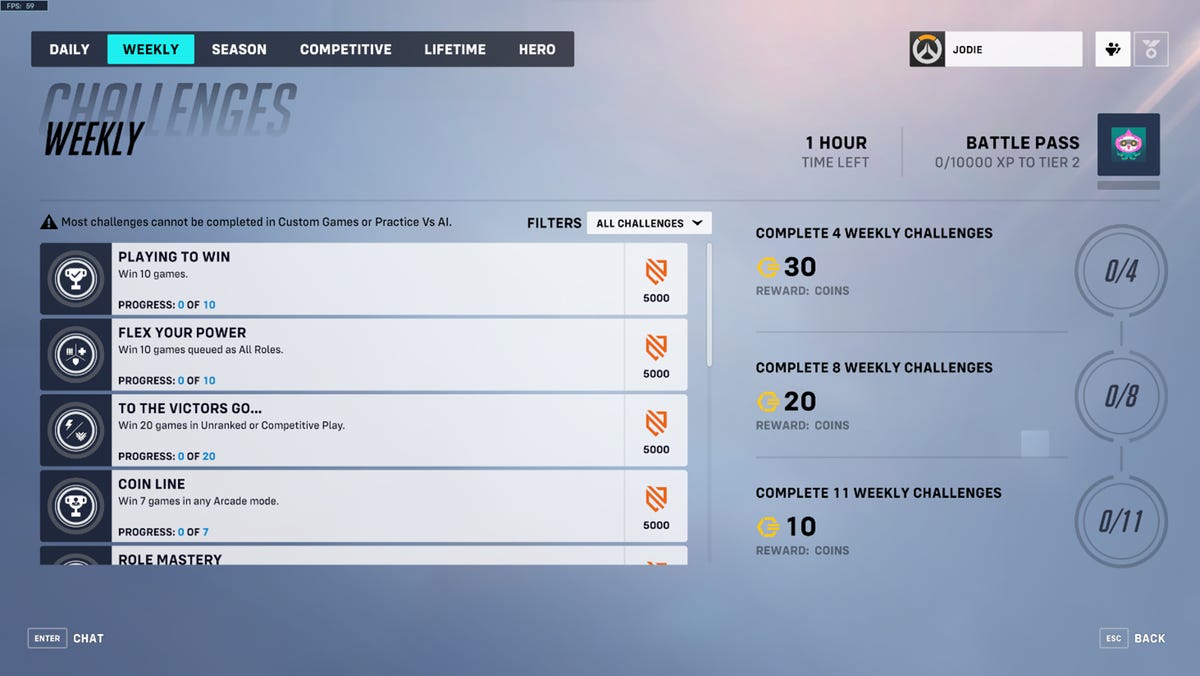
Daily and weekly challenges will award coins, which can be used to purchase premium battle passes and other shop items.
Blizzard
Players who join the game later or who don’t unlock new heroes in the battle pass will have two avenues to unlock them afterward. There will be challenges for new heroes that allow you to unlock them through normal gameplay, though the exact requirements haven’t been announced. Players can also unlock any heroes they’ve missed through the shop by paying a price that Spector said would be pretty close to a full battle pass.
The news that upcoming heroes will have to be unlocked has been met with resistance from the Overwatch community, prompting many discussions about the importance of swapping heroes midmatch and the restrictions the new model imposes on that system. When asked about this conflict, the Overwatch team suggested that the perception and expectation about hero swapping may not be in line with the reality of player behavior.
“When you look at the data of how often people switch heroes and how many heroes they typically play at one time, the majority of our players play a relatively small number of heroes,” Keller said, adding that the developers have tried to tone down hard counters in the game and reduce some of the rock-paper-scissors interactions in an attempt to allow people to play the heroes they want to play, rather than being forced to swap to a counter. Ultimately, while requiring new heroes to be unlocked does impose some new restrictions on gameplay, Keller said the team expects Overwatch 2 to remain highly competitive.
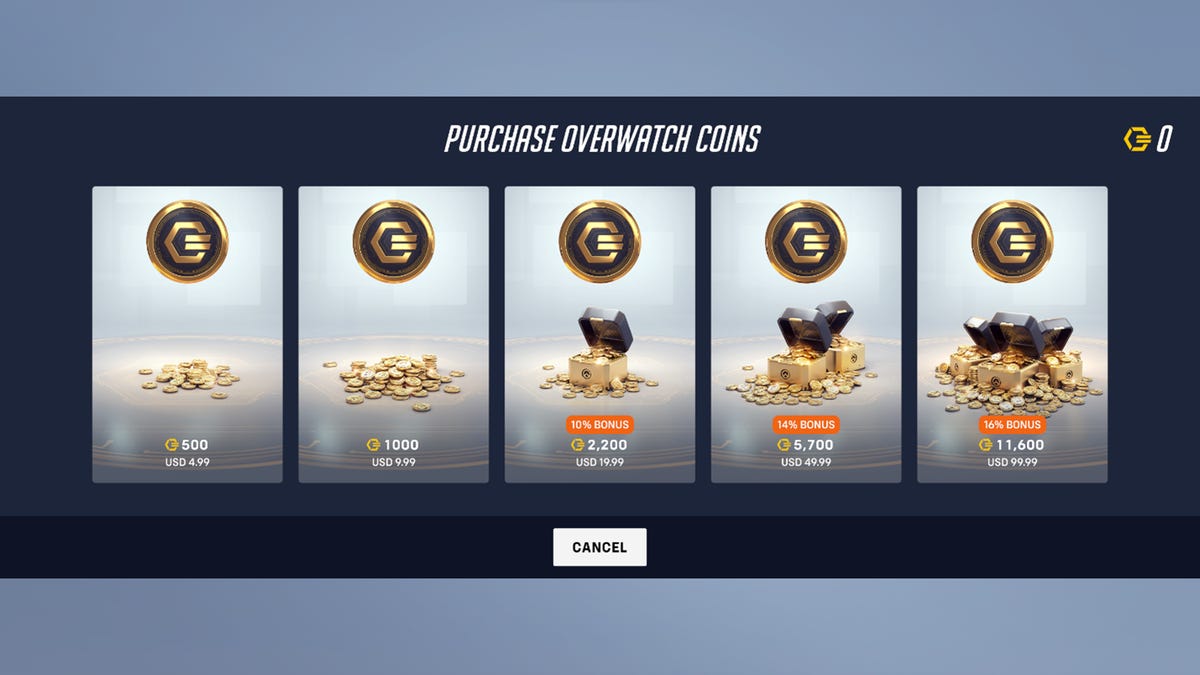
Premium battle passes will cost 1,000 coins — purchasable for $10.
Blizzard
Still, the new model seems designed to steer players toward the battle pass. Spector said the goal of the pass is to deliver overwhelming obvious value for players. “We really want players to look at that system as rewarding and generous and worthwhile of their investment of time and, for some of them, money,” Spector said.
It’s a big bet for Blizzard that players will want to invest continually over time, rather than upfront for the game. We’ll find out if that bet pays off when Overwatch 2 is released on Oct. 4.
